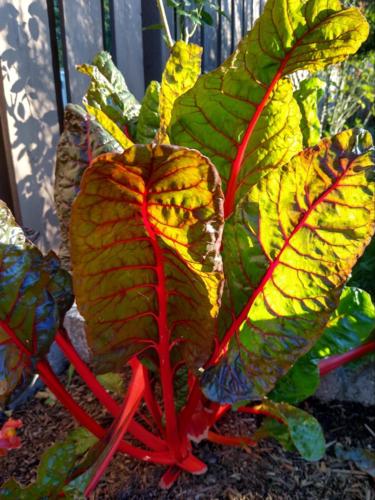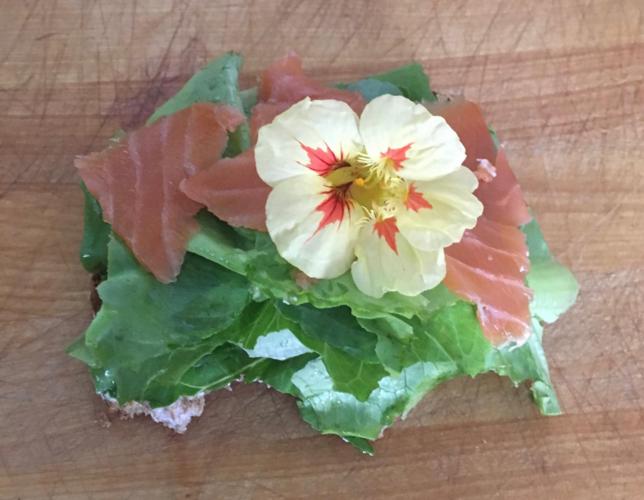March 27, 2021 by IG
Edible Plants That are Also Beautiful
When I decided to take up gardening as a hobby, I had a dream of creating a lush cottage garden, overstuffed with fluffy, billowy blooms. But this sudden floral awakening followed a lifetime of botanical ignorance. So I did what many others were doing in 2010, I created a Pinterest board to save all the pretty flower pictures I found online. I set a cover image for my folder of coveted plants, not knowing what the plant in the picture actually was. It had puffy purple balls exploding out of thin, strappy foliage. Years later, I realized that it was chives.
Since then, I’ve fallen in love with one edible beauty after another, slowly adding herbs like the yellow and green variegated Salvia officinalis ‘Aurea,’ the purple flushed Salvia officinalis ‘Purpurascens,’ and cream edged pineapple mint Mentha suaveolens ‘Variegata’ to my cottage garden. I’ve grown violas, calendula, and nasturtiums, all of which make beautiful edible salad toppers, cake decorations, and drink garnishes.
There are still many more edible plants I’d love to grow for their looks alone and I’m learning of new ones all the time. So I asked around, what are the plants you grow or would like to grow that are both edible and beautiful? Here are the answers I received:
Syzygium Luehmannii (Small Leaf Lilly Pilly/Riberry)
An Australian rainforest tree native to the east coast. It can be used as a tall hedge (2-3 m) as well as a stand alone tree up to thirty meters tall in ideal conditions. It is easily and frequently maintained at a smaller size, however, with specimens around Sydney growing in the 5-10 m height range.
New growth is a bright pink and purple colour and it develops small white fluffy flowers. The fruit are small spiced berries that taste like cranberries crossed with clove and they almost completely cover the tree. The berries are tasty to eat on their own but are great for sauces, chutneys and jam. I am growing one to use in fruit wines and to flavour mead.
— Clusterduck
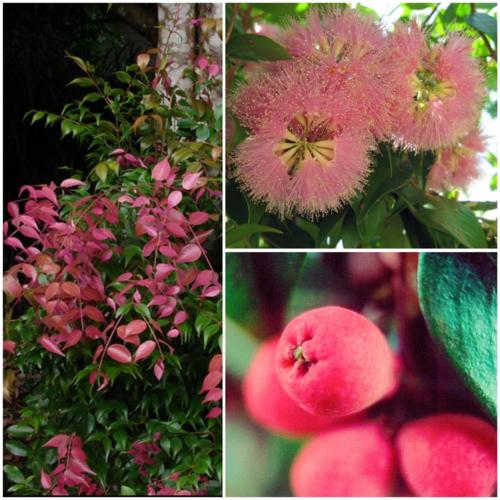
Oemleria cerasiformis (Osoberry)
Oemleria cerasiformis is first one the list, with it’s understated elegance. Osoberry is native where I live, and is a vision in the forests where it grows. First, in the early spring, it puts out small clusters of white flowers that seem to glow in the shade cast by other trees. Following the flowers come edible berries, that ripen through orange to a dark plum. It’s foliage is a paler, yellower green than most of the other native plants around here, so they stand out as bright spots in the forest through the spring and summer.
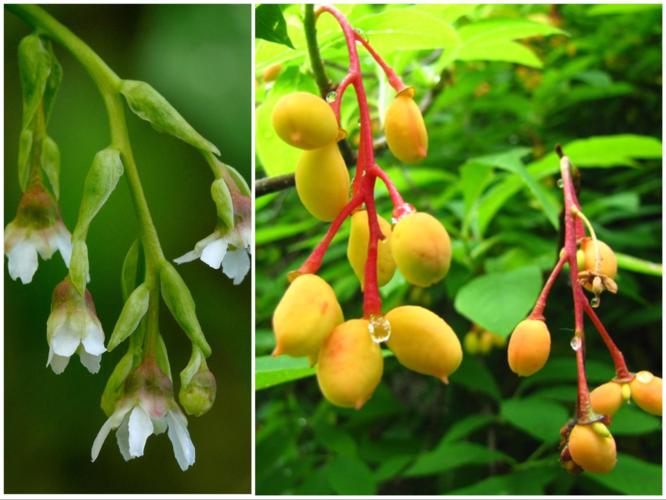
Beta vulgaris (Swiss Chard)
A more typical edible is Swiss chard, which is quite tasty and has incredibly vibrant steams. When the light hits right, the stems glow like a stained glass window. These are one that are regularly included in edible landscapes, so I know I’m not alone in my enjoyment of them.
Actinidia arguta (Hardy Kiwi)
I also think hardy kiwis belong on this list, mostly for their fall color and their blooms. But hey, people plant things like ivy as an ornamental, and I think the leaves of hardy kiwis are much prettier. My kiwi turned a gorgeous golden yellow in the fall, though I don’t know if all cultivars do that or if I just got lucky.
Cyanococcus (Blueberries)
Blueberries, with their incredibly vibrant fall reds really out compete any burning bush or nandina, and you get actually edible blueberries on top- outstanding! I also have always found an understated beauty in their blooms, and if you don’t look at a blueberry bush laden with ripe berries and think ‘gorgeous’, you clearly do not think with your belly as much as I do.
— Anna Clark
Asparagus officinalis (Asparagus)
Asparagus is, as you know, those little green sticks that make your pee smell funky. Asparagus comes in many beautiful colors and sizes, many varieties can even reach 5-6 feet tall, and bush out beautifully, making it a great choice for many gardeners. The most popular and common variety you will come across is ‘Mary Washington.’ The twig sized bundles you buy at the store are probably that variety, so you’ve come across it before without realizing it. They are incredibly hardy plants that can produce food for you for decades, yes decades. There are a few methods of growing asparagus, and you have to go into it with the mindset of it being a long term process, 2-3 years at the absolute minimum. You can purchase asparagus for your garden in either crowns (think like bare root strawberries), or seeds. The advantage of crowns is that they are often a year old, meaning that in ideal conditions you will be able to eat excess sprouts in around 2 years. Planting crowns is very similar to strawberries, roots in the ground on a mound, and don’t bury the crown. Simple enough. The downside is that crowns can be very expensive, as they require a lot of time for whoever you are purchasing them from to grow. If you don’t mind a little headache and a bit more waiting, you can try seeds. Seeds are often very cheap, somewhere in the neighborhood of about $3 for 50-100 seeds. Way cheaper than paying the average $3 per crown. The downside is that germinating and caring for them is a bit more involved, and takes some effort. You will essentially be nursing these asparagus seedlings for months before you are able to transplant them, and they require some care, protection and maintenance. Germinating them is more or less like other large seeds, soak them for 12-24 hours, and then sow them in a tray. They should germinate within a few weeks, and once they are about six inches tall, you can transplant them up into their own pots, or into their permanent home, provided you have protection for them, as they are very vulnerable to the elements and creatures who want to munch on the asparagus as much as you do.
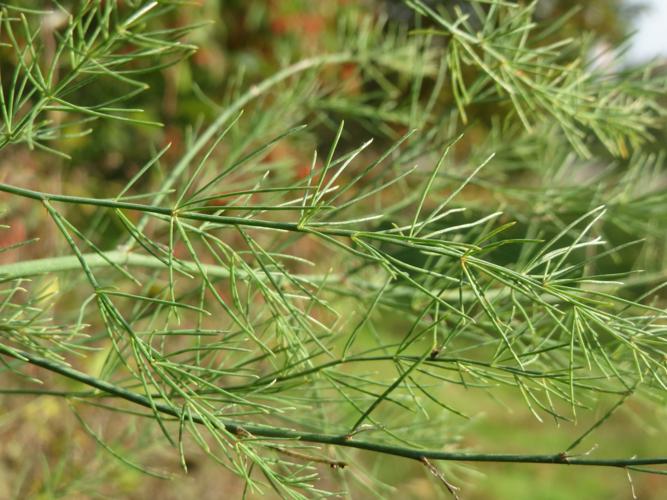
Regardless of how you got them, now is the time to wait, a few years actually. The plant needs all that ferny growth to absorb as much energy into the crown as it can to supply you with tasty spears. After 2-3 seasons, you can begin to selectively harvest asparagus spears, making sure to (obviously) not pick all of them. Each year, the plants will grow into giants, and die back into dormancy, requiring pruning a bit above the soil level to allow for next year’s growth. Typically you can get a few harvests per plant, and still have that absolutely gorgeous foliage every summer. Some things to consider — asparagus is a plant with sexes, and if you see berries being formed don’t be alarmed, but just know that it will not be as productive as a male plant. You can choose to remove the females and replant/sow, or if you really don’t care and aren’t trying to maximize your harvest, they can be left alone to grow, and they may even spread. Asparagus also really REALLY like mulch (I would say mulching them is mandatory) to conserve moisture, reduce their competition with weeds, and because they need that protection for the crowns for those of you gardening in cold weather.
To summarize, for how popular of a vegetable asparagus is, and how beautiful the large ferny foliage can be in the summer months, you’re only doing yourself a disservice by not adding this hardy border plant to your gardens.
— Ancientz
Capparis spinosa (Caper Bush)
Capers are budding flowers plucked from the caper bush, brined in salt and vinegar, and used as garnish or as an ingredient in kitchens around the world. They mainly feature in Mediterranean diet originating from Italy, Greece and Israel, to name some. They are used in salads, pasta, with fish, and in sauces such as tartar sauce. If the buds are left on the plant, they bloom into white flowers with purple stamens. The bush also produces edible berries. Capparis spinosa thrives in an arid climate, in rocky or poor soil, requires full sun, and is deer resistant. The vigorous shrubs scramble everywhere, even growing in the crevices between stones that form the sides of ancient buildings. C. spinosa is hardy in zones 8-11.
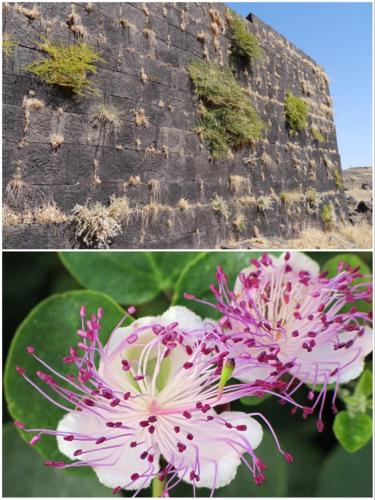
Passiflora sp. (Passionfruit)
When one thinks of passionfruit, a dark reddish-brown fruit comes to mind and when opened, it is yellow with black seeds and is both sweet and a bit tart. The fruit is from a vining plant in the genus Passiflora. Normally only found in tropical regions, however, there is a species that is semi-hardy and is native to the northeast called Passiflora incarnata, known as Maypop in the South. Flowers comes in many different colors, even if the most common colors are purple and white. Passionfruit is used in juices, ice cream, smoothies, cakes, jams, anything that requires the sweetness of the fruit.
— ilbloccocreati
Tropaeolum majus (Nasturtium)
I love growing nasturtium every summer. The seeds are easy to find and grow. My go to has been a trailing variety, Tropaeolum majus. Their low growing habit makes them a great companion for taller plants, and they’re beautiful spilling out of containers. Nasturtium can handle full sun and also perform well in part shade. Not only are they pretty, they’re tasty too! It might seem strange to consider eating a flower and its leaves. If you enjoy a fresh, peppery, hot mustard flavor then nasturtiums are a great addition to your repertoire! At first, I only put them in salads until one day, on a whim, I decided they’d go really well on a sandwich. Whole grain toast smeared with cream cheese, layered with crunchy garden lettuce, salty lox and spicy nasturtium became an irresistible go-to meal. As you can see, there are bites missing from the sandwich in the photo — I enjoyed the flavor combination so much I hardly ever made it past the cutting board and just enjoyed it standing up at the counter! No dishes necessary. This season, I’m going to try growing the ‘Alaska’ variety with variegated leaves for a little extra foliage interest. I’m looking forward to lox sandwiches and experimenting with other food combinations!
— edafonte

